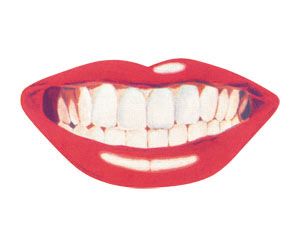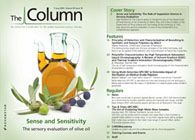UHPLC–ESI–MS–MS Detects Cavity Fighting Compounds in Red Wine
Red wine could help to protect against oral cavities, according to research published in the Journal of Agricultural and Food Chemistry.1 The team used ultrahigh-pressure liquid chromatography tandem mass spectrometry together with electrospray ionization (UHPLC–ESI–MS–MS) to analyze phenolic compounds found in the sampled red wine.

Photo Credit: Getty Images/CSA Images
Red wine could help to protect against oral cavities, according to research published in the Journal of Agricultural and Food Chemistry.1 The team used ultrahigh-pressure liquid chromatography tandem mass spectrometry together with electrospray ionization (UHPLC–ESI–MS–MS) to analyze phenolic compounds found in the sampled red wine.
The mouth is a unique area of the body because it contains nonshedding surfaces – the teeth – which allow microorganisms to stick for long periods of time, leading to biofilm formation (dental plaque). These communities of bacteria are very difficult to remove; dental cavities, periodontal disease, and tooth loss are the most prevalent oral diseases in humans and affect between 60% and 90% of the population worldwide.
Recent research has suggested that wine and grape phenolic extracts could inhibit the growth of different Streptococcus spp. strains. This prompted the current investigation into the antimicrobial properties of wine. Lead author of the study, M. Victoria Moreno-Arribas, told The Column: “In the last 5 years, our group had greatly contributed to the knowledge on the interactions of wine polyphenols and human microbiota, in particular, gut microbiota. Considering that the oral cavity is the first barrier that is behind the wine consumption and that wine is rich in polyphenols, we decided to tackle this study.”
The team grew a variety of cultures of bacteria responsible for dental diseases, both Gram-positive (A. oris, S. mutans, S. oralis) and Gram-negative (F. nucleatum, V. dispar), as a biofilm model. The biofilms were dipped into red wine, dealcoholized red wine, water (as a control), wine extract, and grape seed extract. Moreno-Arribas explained why UHPLC–ESI–MS–MS was used: “Coupling of ESI–MS–MS detection to LC systems has been demonstrated to be a powerful tool for the identification and characterization of wine polyphenols, as well as for the study of their transformation products through oral and digestive passage.”
The team concluded that red wine at moderate concentrations inhibited the growth of some pathogenic species in an oral biofilm model (F. nucleatum and S. oralis). This confirmed the existing knowledge about the health benefits of red wine. The solutions spiked with grape seed extract were also effective against F. nucleatum, S. oralis, and A. oris. This result in particular could lead to the development of a natural ingredient in the formulation of oral care products to prevent dental cavities.
Moreno-Arribas said: “To our knowledge, this is the first study that has demonstrated the ability of moderate consumption of red wine and grape extract rich in polyphenols to inhibit human pathogenic oral bacteria in a biofilm model. In the next step, we will perform studies in ex vivo and in vivo conditions, also considering bacteria present in the saliva and/or adhered to oral surfaces, as well as intra/inter-individual differences.” – K.M.
Reference
1. I. Muñoz-González, Thomas Thurnheer, Begoña Bartolomé, and M. Victoria Moreno-Arribas, Journal of Agricultural and Food Chemistry62, 4731–4737 (2014).
This article was featured in The Column. Click to view the issue.

New Study Reviews Chromatography Methods for Flavonoid Analysis
April 21st 2025Flavonoids are widely used metabolites that carry out various functions in different industries, such as food and cosmetics. Detecting, separating, and quantifying them in fruit species can be a complicated process.
Analytical Challenges in Measuring Migration from Food Contact Materials
November 2nd 2015Food contact materials contain low molecular weight additives and processing aids which can migrate into foods leading to trace levels of contamination. Food safety is ensured through regulations, comprising compositional controls and migration limits, which present a significant analytical challenge to the food industry to ensure compliance and demonstrate due diligence. Of the various analytical approaches, LC-MS/MS has proved to be an essential tool in monitoring migration of target compounds into foods, and more sophisticated approaches such as LC-high resolution MS (Orbitrap) are being increasingly used for untargeted analysis to monitor non-intentionally added substances. This podcast will provide an overview to this area, illustrated with various applications showing current approaches being employed.

.png&w=3840&q=75)

.png&w=3840&q=75)



.png&w=3840&q=75)



.png&w=3840&q=75)








